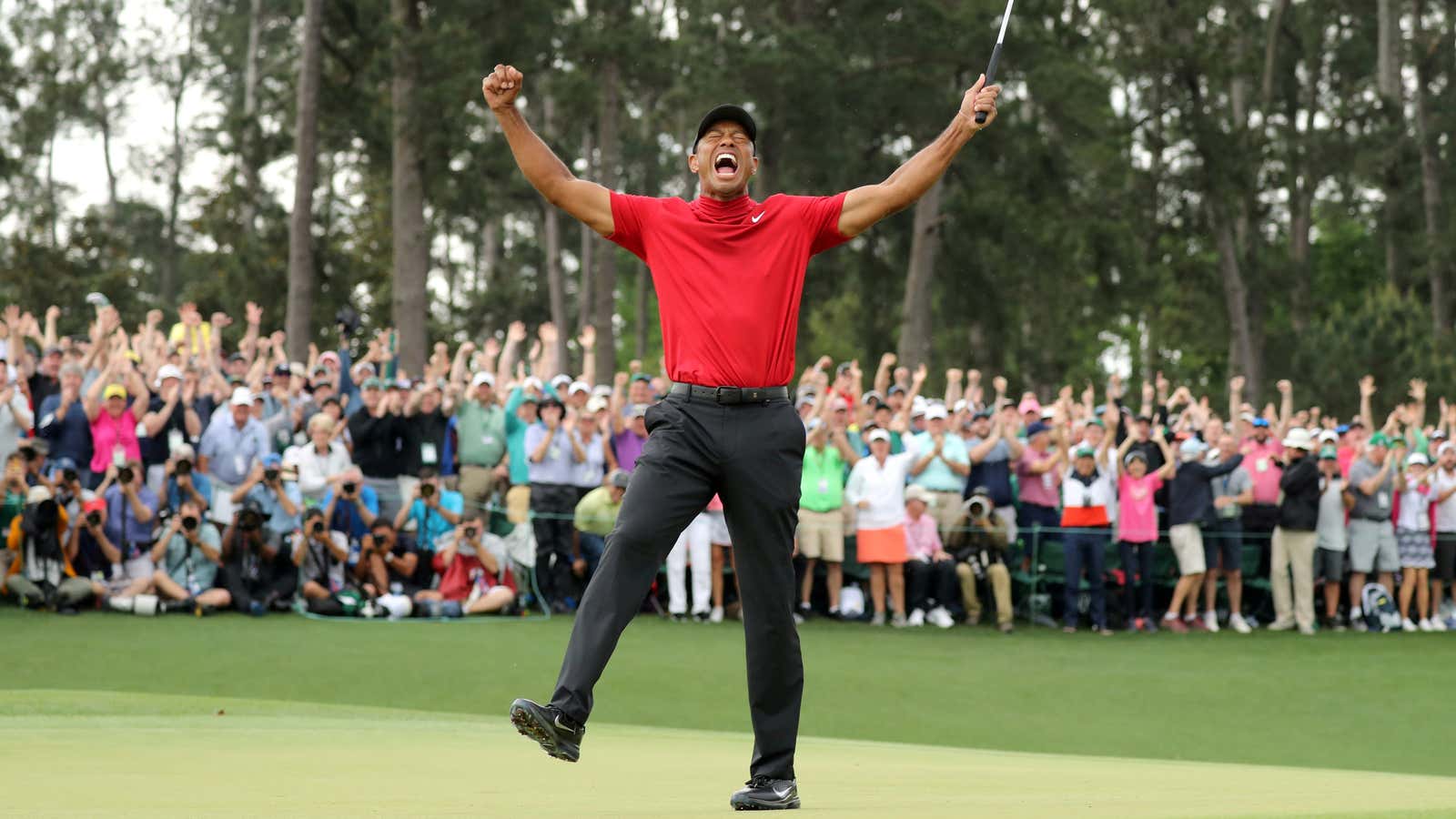Golf can be a big TV event when Tiger Woods plays. It’s even bigger when he plays well. With the superstar’s future in the sport now uncertain, so too is its presence on television.
Woods was seriously injured yesterday in a single-car accident in California. In a statement early this morning, his representatives said he required emergency surgery to treat multiple wounds to his right leg, including open fractures to his tibia and fibula. At the time of the accident, Woods was on a break from competition, recovering from his fifth back surgery.
Given the severity of his injuries, it’s quite unlikely Woods will return to competitive golf this year. While other athletes have eventually returned from similar injuries—and Woods’ unlikely comeback in 2018 showed it’s unwise to count him out—his career could be in jeopardy. The accident has forced fans and observers to ponder what golf will look like without Tiger Woods in it. Pondering most of all are TV broadcasters, who for two decades reaped the benefits of Woods dominating the sport.
The Tiger Effect: Tiger Woods and TV ratings
Tiger Woods is the only golfer who can single-handedly boost a tournament’s prospects on TV. Golf fans enjoy nothing more than watching Woods contend for a major championship like the Masters or the US Open.
When Woods came in second at the 2018 PGA Championship, the tournament’s final round garnered the most TV viewers since 2009, when he also finished second:
Network executives have said Woods’ mere presence can boost ratings as much as 40%. When Woods won the Masters in 2019—his first major championship win since 2008—its final round was the most-watched in six years.
A golf prodigy, Woods won his first major in 1997 at the age of 21. He was one of the most dominant athletes in the world from then until about 2011, when injuries and personal problems derailed his career. In 2017, he was arrested for driving under the influence after he fell asleep at the wheel, having accidentally mixed several prescription drugs. (There was no evidence Woods was impaired during yesterday’s crash, police said.)
While Woods was away, golf TV ratings suffered. When he returned to a full competition schedule in 2018, the viewers came back too. For the events that year in which he finished in the top 25, ratings were up 93% compared to the same tournaments a year earlier, according to Nielsen.
Like for all sports, golf ratings were down in 2020 due to the Covid-19 pandemic. They could improve this year, especially if the sport’s “Covid bump” in popularity proves real. There is some evidence the sport is attracting new players, given that it’s one of the few activities one could do safely during the pandemic. But Woods’ absence could put a halt to any momentum golf hoped to build headed into a new season.
Since winning the Masters in 2019, Woods has played sparingly. And when he has played, he’s performed poorly by his career standards. But, until yesterday, there was always a sense that he’d keep coming back, even if it’s a slightly diminished version of him each time. Each major event without Woods was just one step closer to one with him.
Now 45 years old and already dealing with a nagging back issue on top of his devastating leg injuries, golf can no longer count on Tiger Woods to buttress the sport’s presence on TV.
